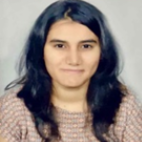
Stuti N. Jagtap
Work place: Vishwakarma Institute of Technology /Department of Instrumentation and Control Engineering, Pune, 411037, India
E-mail: stuti.jagtap21@vit.edu
Website: https://orcid.org/0009-0003-7574-9366
Research Interests:
Biography
Stuti N. Jagtap is an undergraduate student in the Instrumentation Engineering Department, At the Vishwakarma Institute of Technology in Pune. Her research focuses on robotics, automation, image processing,machine learning and data science.
Author Articles
A Comprehensive Evaluation of Spectral Unmixing Methods in Hyperspectral Imaging
By Archana Chaudhari Samrudhi S. Wath Tushar P. Zanke Stuti N. Jagtap Snehashish S. Mulgir
DOI: https://doi.org/10.5815/ijigsp.2025.01.05, Pub. Date: 8 Feb. 2025
This study explores hyperspectral image classification, particularly focusing on spectral unmixing techniques applied to the widely used "PaviaU" dataset. Nine distinct endmembers, representing materials such as Water, Trees, and Shadows, serve as the foundation for our investigation. Introducing a novel linear regression model meticulously tailored for hyperspectral image reconstruction, we aim to address the complexities inherent in such datasets. Our approach leverages a fusion of non-negative least squares (NNLS) and a sum-to-one constraint, employing the Sequential Least Squares Quadratic Programming (SLSQP) method to seek optimal coefficients. Through rigorous experimentation and analysis, our model achieves a mean reconstruction error of 1152.318. The efficacy of our approach lies in its seamless integration of NNLS and SLSQP, customizing a solution to the intricate nuances of hyperspectral data. By significantly reducing reconstruction errors, our method represents a substantial advancement in spectral unmixing techniques. Furthermore, this study produces nine abundance maps for each endmember using least squares with constraints, lasso, and averaging the squared differences between observed and reconstructed spectra for pixels with nonzero class labels to determine reconstruction error. Emphasizing the importance of abundance maps and reconstruction errors, we compare the results obtained through our proposed spectral unmixing methods with those of alternative approaches. This comprehensive analysis not only sheds light on the performance superiority of our proposed methods but also provides valuable insights for practitioners and researchers working with hyperspectral imaging data. By offering enhanced accuracy and efficiency in spectral unmixing, our approach holds significant promise for applications ranging from environmental monitoring to precision agriculture and beyond.
[...] Read more.Other Articles
Subscribe to receive issue release notifications and newsletters from MECS Press journals